All About Guest User Access in Microsoft Teams
Let's explore the user experience of being a guest on another organization’s Teams channel so that you can decide if that method will work for your team on their next project!
Intro
As an organization constantly doing projects with other organizations, we find ourselves needing a central place to communicate (without the hassle of email). We often use Microsoft Teams for communication and collaboration on projects, and we need to either invite guests to our project-specific Team, or we need our client to invite us as guests within their Teams tenant. So, what is this experience like? Before inviting clients as guests to the Teams channel, I wanted to make sure I understood what the experience would be like for them on the other side, bouncing back between two different tenants. What does that look like? Is it cumbersome? Does it make sense for us to communicate with people outside of our organization in this way? What about permissions? I’ll be diving into the answers to these questions below.
Microsoft only supports the use of one Teams environment at a time, but they have made it fairly smooth to toggle between Teams accounts in different tenants. I’m going to show you how an administrator would add a guest to their channel and then what the experience would be for that guest to jump between their main Teams account and the new tenant where they are a guest. Because Teams is such an all-encompassing collaboration tool, it’s a challenge for Microsoft to allow a swift back-and-forth between tenant access, but the current offering is a good start. Overall, the experience is decent, and I’ve found it to be a great tool for effective collaboration with people from outside my organization.
Add a Guest User to Your Team:
Add the external user to your team by first selecting the ellipsis next to your team name and click `Add member`.
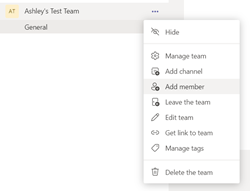
Enter the user’s full email address, select that you wish to add them as a guest, and then click `add`.
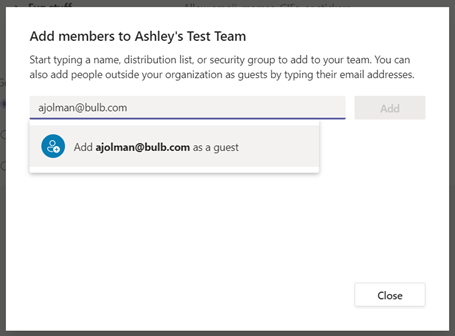
Now you should see the user you added to your Team’s member list. Their name will display followed by “guest”.
The Guest User’s Perspective:
Accept the Invitation
After the guest has been added to a team, they will receive an email letting them know which team t hey’ve been added to as a guest, along with a link to jump to it.
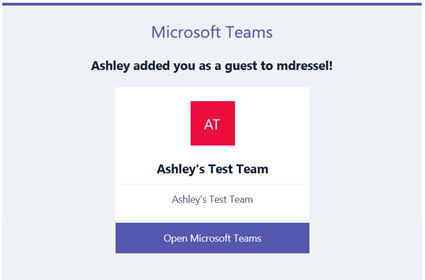
They will need to click that link in order to accept the guest access.
Toggle Between Teams
Now that the guest has access to both their original environment and as a guest in your environment, there is an easy way to toggle between the two. They will simply click on their picture in the top menu bar to view the list of environments they have access to and select which one they’d like to view. In the example below, Ashley has access to 3 different Teams environments:
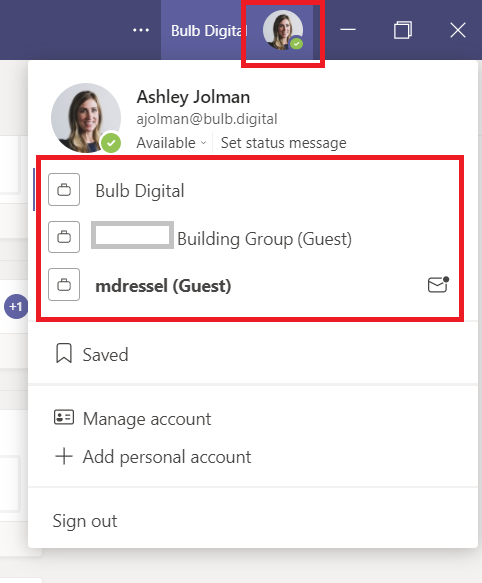
When they click the tenant they’d like to access, the entire Teams app will refresh to show as that environment. Now, the guest can view the Team or Teams and Channels they have been added to, as well as the tabs on the top of each channel, giving them full access. The guest will only see the Teams & Channels they have permissions to, and only within the specific organization, they are currently viewing. Remember, guests have permissions to the associated SharePoint site and files as well.
If you’re a guest in a channel of another organization, there is not an option to view that channel within the list of channels you view while in your main tenant. Basically, teams and channels from each tenant only show up when viewing that tenant exclusively.
Here is an example of the view when accessing Teams as a guest. I can see only the Team & Channel I was added to, and when I post, I am clearly labeled as a guest:
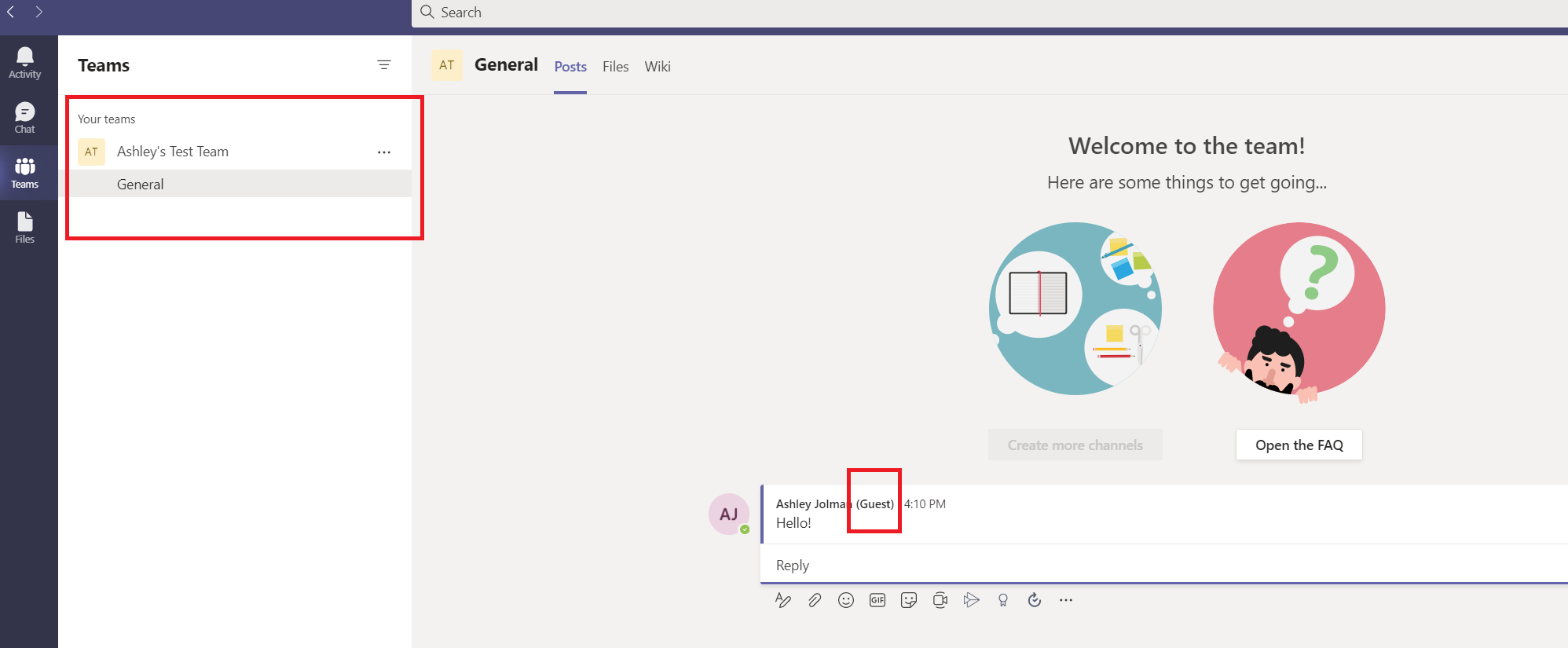
If the inability to see both Teams environments at the same time is a deal breaker for you, there is a creative work around. Essentially, you will need to have the web version of Teams open in an incognito browser window. That one can be logged into an account, while simultaneously logged into a Teams account on a different tenant on your desktop app.
Notifications
A big concern for those working in multiple tenants of Microsoft Teams is the notifications. Mainly, if we can only view one tenant at a time in Teams, will a user receive notifications for the tenant they aren’t currently in? The answer is that you will get notifications for the Team you’re a guest in, even if you’re working in your home environment, as long as you have the desired notifications turned on in your settings. However, there is not a badge alerting you to unread activity unless you’re using mobile. The notifications in mobile for multi-tenant access are a little bit more advanced than the desktop ones currently. Mainly because on mobile you do see a red badge indicator for unread activity on other tenants.
Conclusion
Microsoft only supports the use of one Teams environment at a time, however, they do make it easy to toggle between accounts. It’s very easy to add a guest user and trust they will only have access to the specific Team you are adding them to. If you’re the one who is a guest user, it’s a fairly clean process to jump to other Teams' environments to work within. The only desire I still have is a badge-like notification indicating that I have unread messages in the tenant in which I’m a guest. The pop-up notifications are easily ignored during certain times of my workday, so to ensure I don’t miss anything I find myself signing up for email notifications which I’d rather not have to do.
As a person who is constantly communicating and collaborating on projects with people outside of my organization, I am impressed with the ability to add guests or to be a guest within Microsoft Teams. It has been a great way to efficiently and effectively execute projects while maintaining security.


Is Team Communication Holding You Back?
Find Out in Just 2 Minutes.
Take our quick scorecard to uncover communication gaps and hidden barriers within your team.




.jpeg)

.jpg)







